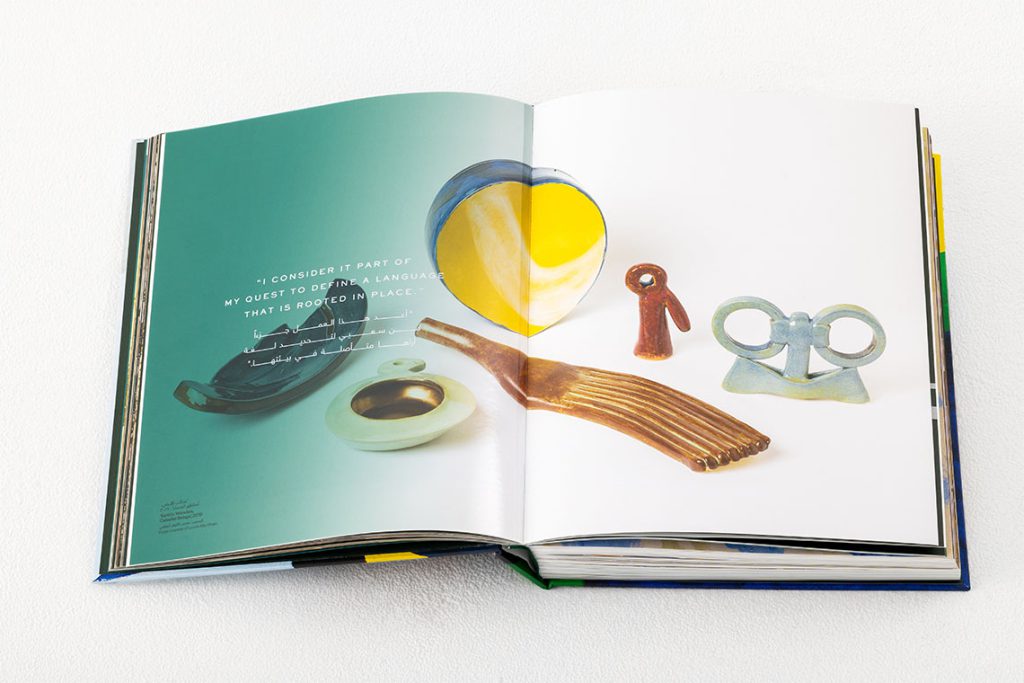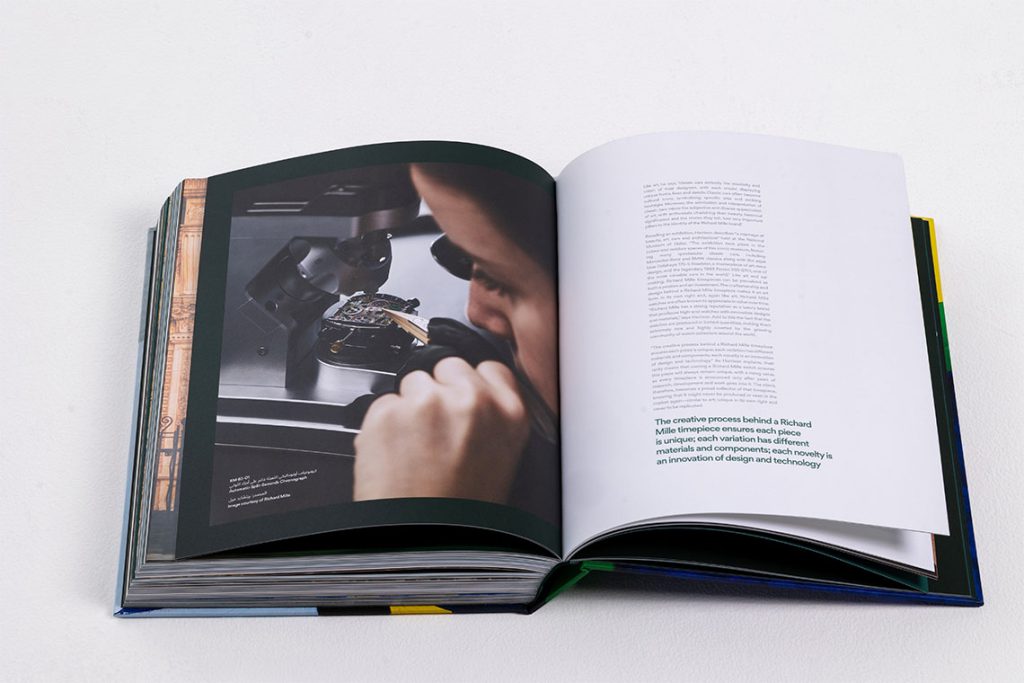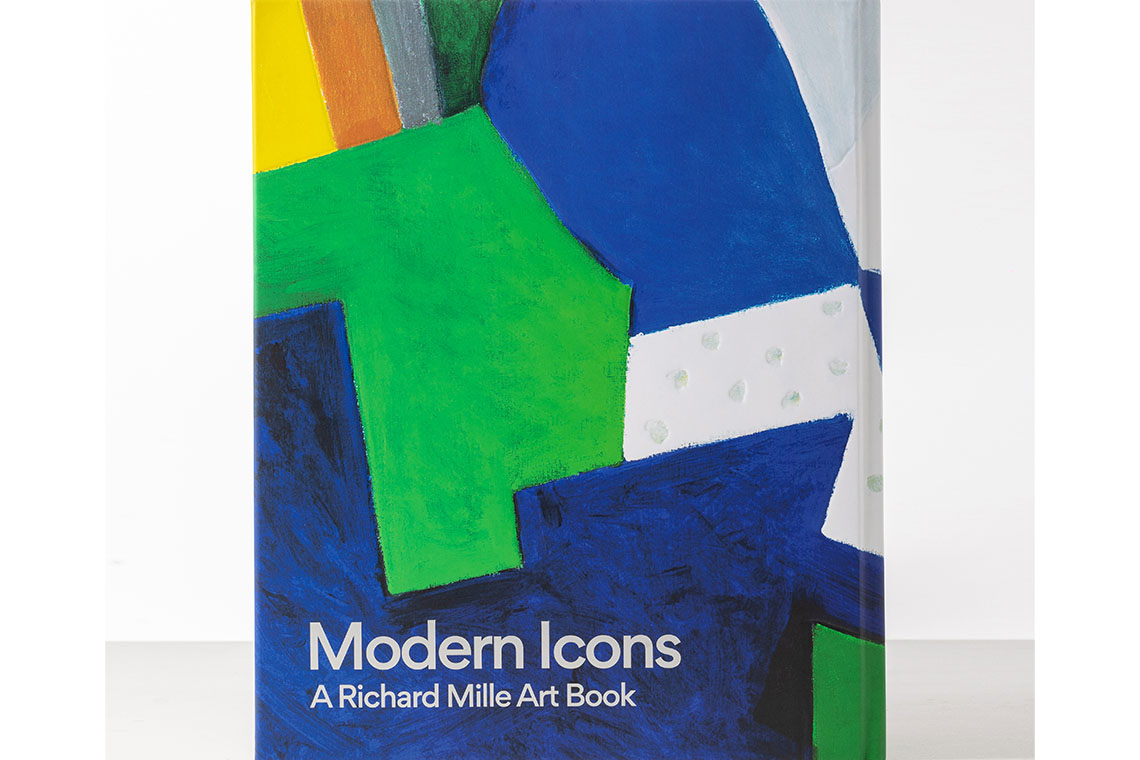boutique.louvreabudhabi.ae
Canvas rating *****
At first glance, the second edition of the Richard Mille Artbook, Modern Icons, curated by Dyala Nusseibeh, Director of Abu Dhabi Art, might seem like a lavish coffee table volume, with the customary high production values of the genre. Its stunning cover, a collaboration with the Iraqi artist Dia al-Azzawi, makes for an iconic visual impact, perfect for putting on display. Yet although this artbook is indeed a veritable feast for the eyes, it contains hidden depths and riches. The arrestingly elegant visuals and series of stunning never-before-seen photographs tell a compelling story that spans time and place. Richard Mille is a longtime advocate of the arts and the brand’s respect for tradition and its commitment to the highest standards of craftsmanship in horology flows seamlessly into its support for the contemporary art landscape across the Arab world.
Reading from right to left, this bilingual Arabic and English artbook is as ambitious as the place where it begins: Abu Dhabi. This is where the annual Richard Mille Art prize, with which this edition of the artbook coincides, takes place in partnership with the Louvre Abu Dhabi. The focus of this second edition (the first edition focused on the art of the Gulf ) is on the key personalities in the development of the Modern and Contemporary art scenes of the MENA and Turkey regions.

Seven different sections in the book pay homage to the coming of age of the modern and contemporary art scenes in key areas: the Gulf, North Africa, Morocco, Egypt, the Levant, Iraq and Turkey. From the surrealist movement in Egypt and the role of women such as Samia Halaby, Etel Adnan and Simone Fattal in the development of the Levantine art scene, to modernism in Iraq and modern portraiture in Turkey, the cultural richness of the region is brought to life in a celebration of those who have most contributed to it.
Particular attention is paid to collectors and patrons in a reminder of the importance of those who seek to acquire art through a genuine desire to preserve it and share it with others. Seyda and Can Elgiz talk about their non-profit art collection and how they see themselves as the custodians of artwork for future generations, with a duty to disseminate and share their knowledge. Similarly, Basel Dalloul explains his desire to create a place to centralise and preserve art, and how he has achieved this with the Ramzi and Saeda Dalloul Art Foundation, named after his parents and now housing an extensive art collection from all over the Arab world. He especially touches upon the importance of art in bridging the gaps in the region and encouraging diverse countries to see common concerns.

This sense of solidarity and kinship recurs throughout the book, but is perhaps most touchingly felt in one of the fold-out pages. Here the reader encounters Dia al-Azzawi’s iconic work, Sabra and Shatila Massacre (1982–83). A graphic and heart-rending representation of the tragic moment where thousands of Palestinian refugees and Lebanese civilians were brutally murdered, it stands as a true emblem of solidarity across the region.
The book ends with a touching tribute to the late Tarek Al-Ghoussein, whose work across the UAE art scene undeniably set the standard for future artists to follow. His unfinished series, Odysseus, which was set to record the 214 small islands off the coast of Abu Dhabi, stands as a testament to the power of art in documenting our changing times. Through highlighting such practices, Richard Mille reminds us of our duty to look to our surroundings and to respect the past as we cleave our way slowly towards future innovations. Modern Icons is a true collector’s item and a landmark contribution by the timeless Swiss watch brand to furthering knowledge and appreciation of Middle Eastern art.
The book is available for perusal at all Richard Mille boutiques
This review was originally published in Canvas 113: Common Threads



